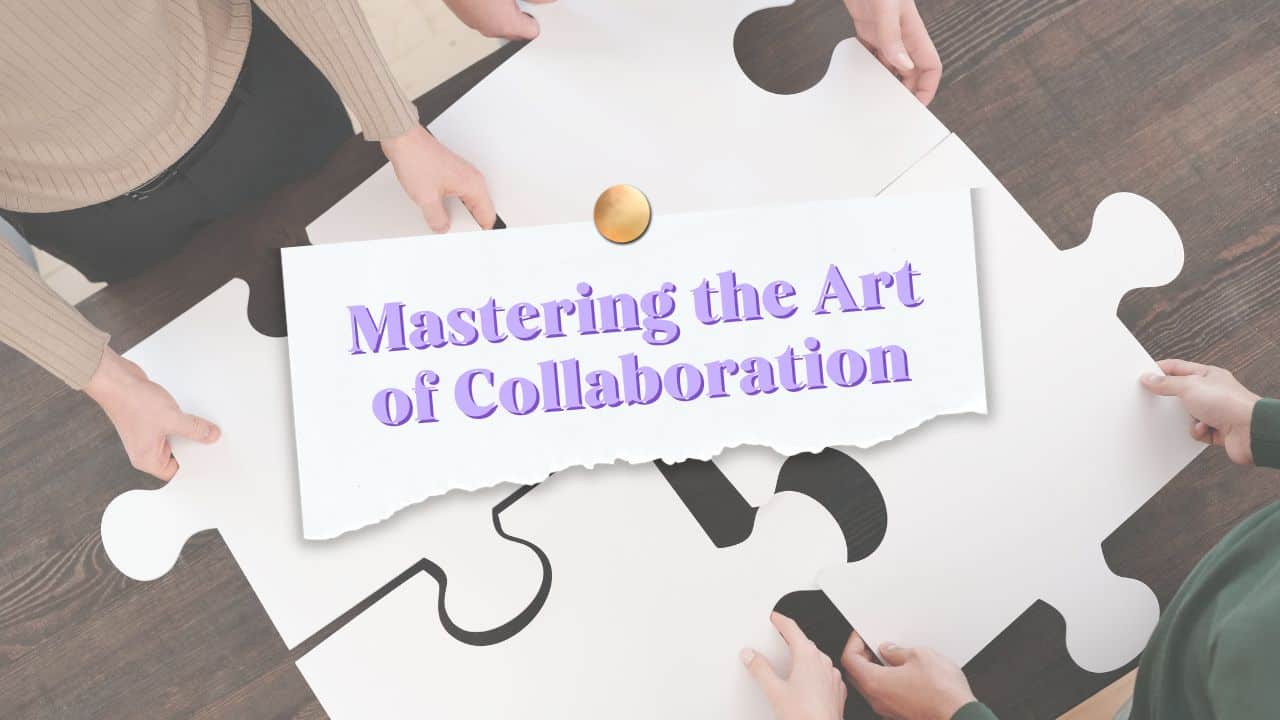Collaboration between in-house and outsourced agile teams is crucial for successful software development projects. However, it comes with unique challenges due to geographical distances, time zone differences, and communication barriers. In this article, we explore the art of mastering collaboration between these teams. We highlight the importance of effective collaboration, discuss strategies for clear communication, building trust, aligning processes, and provide practical solutions to overcome challenges and mitigate risks.
By implementing these principles, organizations can maximize the potential of their hybrid teams and achieve project success.
Establishing Clear Communication Channels
Clear and open communication channels are paramount for effective collaboration between in-house and outsourced agile teams. Efficient communication fosters transparency, aligns expectations, and enhances overall project coordination. Here are some key considerations:
Clear communication ensures that information flows seamlessly between teams, reducing misunderstandings and delays. It promotes a shared understanding of project goals, tasks, and responsibilities, enabling teams to work in sync towards a common objective.
For example, in the retail industry, imagine a scenario where an in-house development team is collaborating with an outsourced team responsible for implementing an e-commerce platform. Clear communication channels would enable the teams to discuss product features, inventory management, and customer support requirements effectively, ensuring a smooth online shopping experience for customers.
Explore various communication tools and techniques that facilitate collaboration. Depending on the project’s requirements, consider using instant messaging platforms, video conferencing tools, project management software, and collaborative document sharing platforms. These tools enable real-time communication, file sharing, and seamless collaboration, bridging the gap between in-house and outsourced teams.
Tips for effective communication protocols:
Establishing effective communication protocols is essential for maintaining a productive working relationship. Consider the following tips:
- Set clear expectations: Define communication expectations, such as response times, preferred communication channels, and availability, ensuring everyone is on the same page.
- Regular meetings: Schedule regular meetings, such as daily stand-ups or weekly sync-ups, to keep everyone informed and aligned. These meetings provide an opportunity for team members to share updates, discuss challenges, and collaborate on problem-solving.
- Document communication guidelines: Create a document outlining communication guidelines and protocols, including best practices for sharing project-related information, escalation procedures, and decision-making processes. This document serves as a reference for all team members and promotes consistent communication practices.
Fostering Trust and Building Relationships:
Building trust and cultivating strong relationships between in-house and outsourced agile teams is vital for successful collaboration. Trust forms the foundation for effective communication, collaboration, and problem-solving. Consider the following strategies to foster a collaborative culture and build trust among team members:
Trust is essential for establishing open and honest communication, promoting collaboration, and resolving conflicts effectively. Building strong relationships fosters a sense of camaraderie, respect, and mutual understanding among team members.
Strategies for creating a collaborative culture and fostering trust:
- Encourage open communication: Create an environment where team members feel comfortable expressing their ideas, concerns, and feedback. Foster a culture of active listening, empathy, and respect, valuing diverse perspectives and encouraging constructive dialogue.
- Promote transparency: Share information openly, including project updates, challenges, and decisions, to foster trust and keep everyone informed. Transparent communication builds confidence and reduces uncertainty among team members.
- Establish clear roles and responsibilities: Clearly define the roles, responsibilities, and expectations of each team member. This clarity eliminates ambiguity, enhances accountability, and strengthens trust among team members.
Benefits of team-building activities and cross-team interactions:
- Team-building activities: Organize team-building exercises, both virtual and in-person, to promote trust and collaboration. These activities can include ice-breaking sessions, virtual team games, or collaborative problem-solving exercises. Team-building activities strengthen relationships and create a positive and cohesive working environment.
- Cross-team interactions: Encourage cross-team interactions and collaborations, such as joint workshops, knowledge-sharing sessions, or shared training programs. These interactions provide opportunities for team members to learn from one another, build relationships, and develop a deeper understanding of each other’s roles and perspectives.
- Fostering of innovation and creativity: When team members from different backgrounds and areas of expertise come together, they bring diverse perspectives and ideas. Collaborative activities and interactions stimulate creativity, encouraging the generation of innovative solutions and approaches to challenges. This exchange of ideas and knowledge can lead to improved problem-solving, increased efficiency, and the development of unique solutions that drive the growth and competitiveness of the organization in the transportation and logistics industry.
Aligning Processes and Agile Practices
Aligning processes and agile practices between in-house and outsourced teams is crucial for seamless collaboration and project success. It ensures that both teams work together efficiently, share a common understanding, and collectively strive towards achieving project goals. Consider the following strategies to align processes and agile practices:
Alignment between teams streamlines workflows, minimizes confusion, and enhances overall productivity. It establishes a framework for consistent communication, task management, and decision-making, leading to improved project outcomes.
What are the techniques for creating a shared understanding?
- Define project goals: Clearly communicate the project’s objectives, desired outcomes, and success criteria to all team members. This shared understanding aligns the teams towards a common purpose and provides a clear direction for their efforts.
- Establish timelines and milestones: Develop a project timeline with key milestones and deadlines. Share this timeline with both the in-house and outsourced teams to ensure everyone is aware of critical dates and can plan their work accordingly.
- Set expectations and deliverables: Establish clear expectations regarding deliverables, quality standards, and communication protocols. Document these expectations in a shared repository or project management tool for easy reference.
How to adapt agile practices for distributed teams?
Leverage tools and techniques that support asynchronous communication to accommodate different time zones and allow team members to collaborate effectively, even if they are not working simultaneously. This approach ensures continuous progress and avoids delays.
Utilize collaborative project management tools that enable real-time updates, progress tracking, and visibility into tasks and responsibilities. Shared platforms promote transparency, accountability, and a shared understanding of work progress.
Maintain regular communication through virtual meetings, stand-ups, or progress updates. Implement agile practices such as daily scrums or sprint planning sessions to ensure that all team members are aligned and aware of the project’s progress and upcoming tasks.
Overcoming Challenges and Mitigating Risks
How can the challenges of collaboration between in-house and outsourced agile teams be effectively addressed for successful project outcomes? Implementing practical strategies and risk mitigation techniques are key to overcoming these challenges. Here are some approaches to consider:
Addressing common challenges:
- Communication barriers: Language barriers, cultural differences, and varying communication styles can hinder effective collaboration. Find ways to bridge these gaps through clear communication protocols, language support, and fostering a culture of inclusivity.
- Time zone differences: Working across different time zones can create delays in communication and decision-making. Establish overlapping work hours, schedule regular meetings, and leverage asynchronous communication tools to ensure consistent collaboration.
- Lack of face-to-face interaction: Not being physically present in the same location can impact team dynamics. Foster personal connections through virtual team-building activities, encourage video conferences, and use collaborative platforms to create a sense of camaraderie.
Practical strategies and solutions:
- Establish strong project management: Assign dedicated project managers who can coordinate and facilitate collaboration between teams. They can ensure clear task delegation, monitor progress, and address any issues promptly.
- Foster a culture of transparency: Encourage open and transparent communication, sharing progress updates, challenges, and risks. This transparency builds trust, enhances problem-solving, and enables teams to work together towards solutions.
- Develop a shared knowledge base: Create a centralized repository or knowledge-sharing platform to store project documentation, best practices, and lessons learned. This allows easy access to information for both in-house and outsourced teams, reducing knowledge gaps and ensuring consistent understanding.
Risk mitigation techniques:
- Identify and assess risks: Conduct a thorough risk assessment to identify potential challenges and their impact on the project. This enables proactive planning and implementation of mitigation strategies.
- Implement contingency plans: Develop contingency plans for potential risks, such as team member unavailability, technology failures, or changes in project requirements. These plans provide a roadmap for responding to unforeseen circumstances and minimizing disruptions.
- Regularly monitor and review progress: Continuously monitor project progress, identify any emerging risks, and promptly address them. Regular reviews and retrospectives help identify areas for improvement and ensure that the collaboration remains on track.
How do we work at Code First Lab?
At Code First Lab, our Dedicated Agile Teams collaborate closely with clients’ in-house developers to deliver successful projects. We prioritize clear communication and shared understanding of goals, timelines, and expectations.
We adapt agile practices to fit project dynamics, fostering trust and strong relationships between teams. Challenges are proactively addressed, and risk mitigation techniques are implemented.
Our collaborative approach enables efficient coordination and problem-solving through regular meetings and shared project management tools.
Collaboration between our Dedicated Agile Teams and the developers of a transportation company resulted in the successful development of a real-time fleet monitoring system. Through a shared understanding of project goals and efficient communication, we created a cutting-edge solution that provided the company with valuable insights into their truck fleet operations. The seamless collaboration between our teams and their developers played a crucial role in delivering a high-quality system that met their specific needs.
At Code First Lab, our Dedicated Agile Teams and clients’ in-house developers combine their expertise to deliver high-quality software solutions and drive business growth.
Final thoughts
In conclusion, effective collaboration between in-house and outsourced agile teams is crucial for project success. By establishing clear communication channels, fostering trust and relationships, aligning processes, and overcoming challenges, teams can work together seamlessly.
To implement these principles in your own projects, consider these tips:
- Prioritize open communication and use appropriate tools for collaboration.
- Foster trust and build relationships through team-building activities and cross-team interactions.
- Align processes and agile practices to create a shared understanding of project goals.
- Proactively address challenges and mitigate risks through regular communication and contingency planning.
Mastering collaboration is an ongoing journey that requires effort and commitment. By following these tips, you can enhance your collaborative efforts and achieve better project outcomes.



